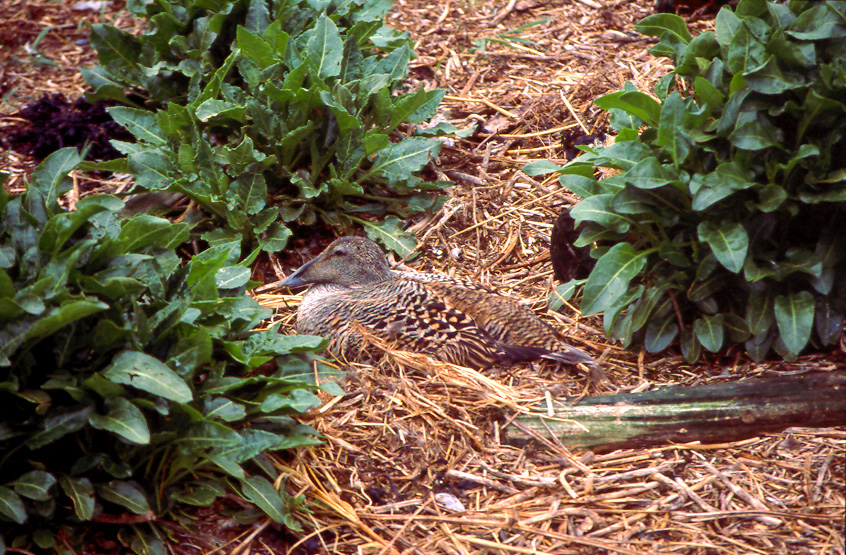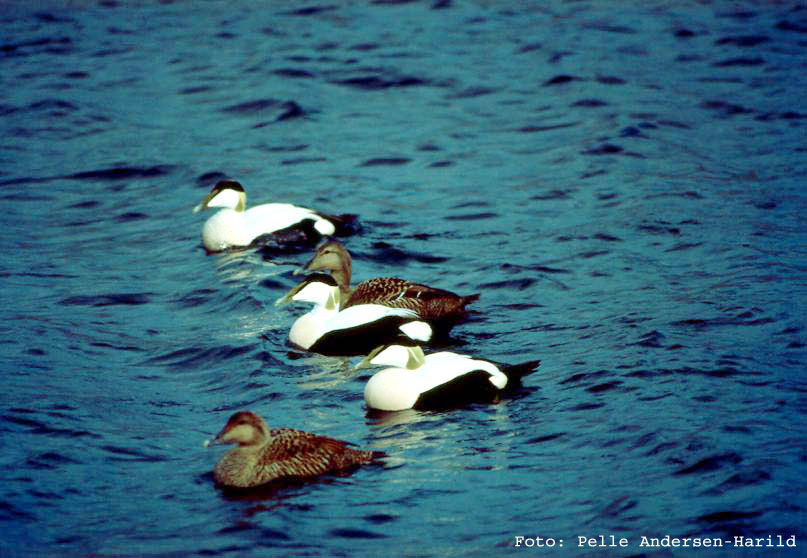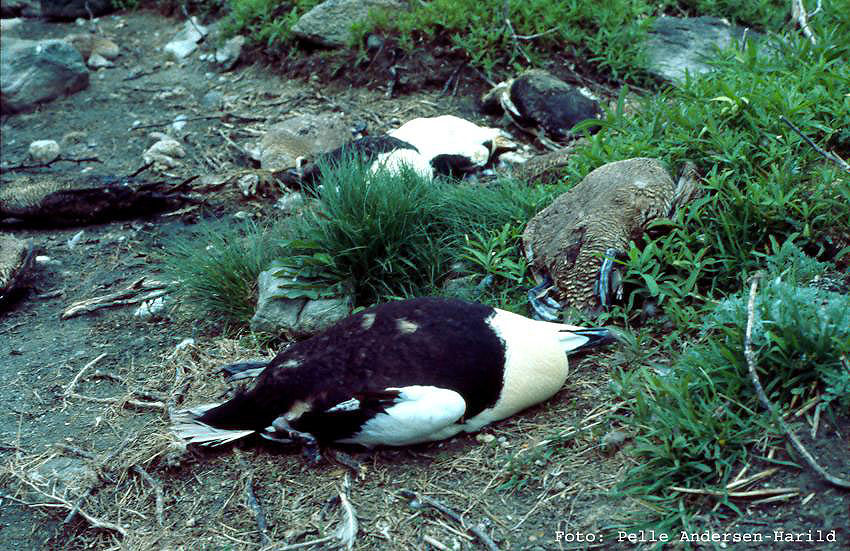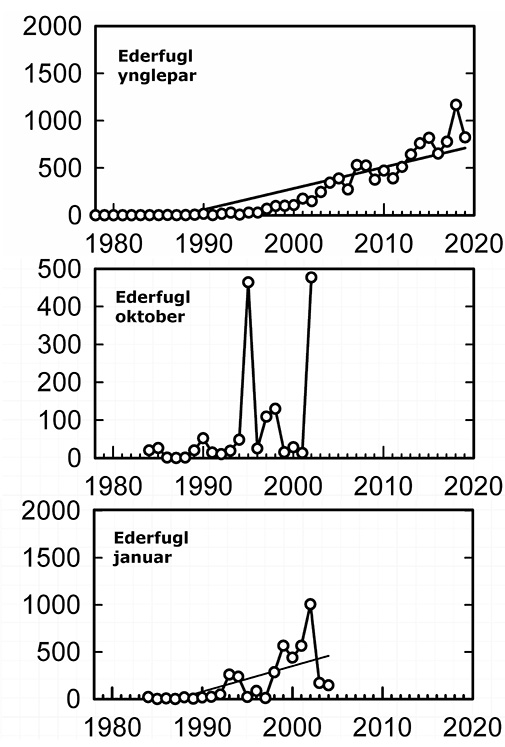Eider
(Somateria mollissima).
A brooding Eider duck.
Although Eiders generally prefer more open and salty areas, since the late 1980s a large breeding population has spread throughout the fjord, and they now breed even on the southernmost islets in the fjord. In the mid 1990s there was a growing population on Eskilsø, but they were driven away by foxes. The island will probably be repopulated if and when Eskilsø is free of foxes. The only protection for the Eider´s nest is the female´s camouflage.

Male and female Eider ducks.
Even in the colder half of the year a lot of Eiders stay in the fjord – mainly in the northern part.
The Eider´s increasing population is due partly to a general increase in the species in the Baltic area (although this has recently begun to decrease), partly to a decrease in pressure from hunters, and also probably to the improvement in the fjord´s water quality.
The Eider´s most important foodstuff is (just like the Tufted Duck) the common mussel, which is found in large numbers in most of the fjord. It is able to eat bigger mussels than the Tufted Duck.
In the southern end of Isefjord there are very big colonies of Eider on the islands south of Orø. In 2001 and 2002 they suffered from avian cholera, and many of them lost their lives. Avian cholera has not been observed in Roskilde Fjord.

Eider Ducks killed by avian cholera.
Key to the Distribution Map.
Eider - population trends

Eider breeding pairs
Eider October
Eider January
